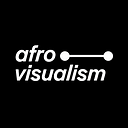Book Review: Subway Art by Martha Cooper and Henry Chalfant

Subway Art was originally published in 1984, a year after the release of the 1983 graffiti film Style Wars.
Martha Cooper and Henry Chalfant were co-producers of the Style Wars documentary.
Beforehand, both of them were photographing the graffiti scene unbeknownst to each other.
Chalfant and Cooper had begun photographing graffiti since the mid-1970s. They met unexpectedly at a show at the OK Harris Gallery in 1980. Chalfant had photos of graffiti artist Lee Quinones and other writers work on display.
Martha Cooper was a staff photographer at the NY Times. Her introduction to the graffiti subculture was on a walk from home after work where she began photographing the neighborhood One of the kids she met HE3 who would explain to her the fundamental concept of tagging. HE3 introduced her to Dondi and the rest was history.
Much of Martha’s photography was capturing the graffiti artists themselves, in their element, drawing on trains or just hanging out.
Before diving into hip-hop culture photography, Henry Chalfant was had previously done work in sculpture.
What drew him to the graffiti subculture was the ephemeral nature of the artform in how graffiti is worked on intensively for a few hours or less and seen from miles on a train even less than a few minutes, never to be seen again.
Most of Chalfant’s photos highlight the breadth of whole cars.
For Chalfant, what was a photographic journey became an anthropological visual study of graffiti art capturing the raw energy of an underground subculture.
In the early 1980s society frowned upon graffiti art which led to Chalfant and Cooper publishing Subway Art overseas through publishing company Thames & Hudson.
To put in perspective, Subway Art was the second book ever published on graffiti art, the difference this one was from those who were among the culture, openly acknowledging themselves as documentarians, while keeping the imagery of the culture intact.
Previously, the first book on graffiti art was “Watching My Name Go By” published as early as 1974 by graphic designer Mervyn Kurlansky, photographer Jon Naar, and writer Norman Mailer. A documentary of the same name was by BBC in 1976.
That same year Norman Mailer wrote “The Faith of Graffiti” published in Esquire Magazine in 1976.
Subway Art showcases Martha Cooper and Henry Chalfant’s photography of graffiti art on trains. The book offers insight into the world of graffiti in NYC breaks down the language and slang that graffiti writers would use.
Showcasing greatness from beginning to end, Subway Art is detailed and packed with quality information, from process photos showing sketch to train cars, fat to skinny caps, maneuvering around train yards, you get to see and hear from the graffiti artists themselves.
Subway Art made graffiti culture known worldwide, the book was in such high demand not only because is it a tangible piece of NY culture but hip-hop culture — graffiti being the first element — in its purest form. It cemented the presence of graffiti art as an art-form.
In a comment under my post on Instagram, DJ Semtex, author of ‘Hip-Hop Raised Me’ said “When I was writing Hip Hop Raised Me, this was the benchmark. I tried my hardest to produce something that could possibly do for others what this book did for me. The classic.”
A classic indeed.
Currently, Martha Cooper and Henry Chalfant’s work can be seen at the Beyond The Streets exhibition curated by Roger Gastman.
You can check out Henry Chalfant and Martha Cooper’s Moving Murals Archive on Google Arts and Culture here.
Read my post about Style Wars and WildStyle here.
Follow @afrovisualism here.










